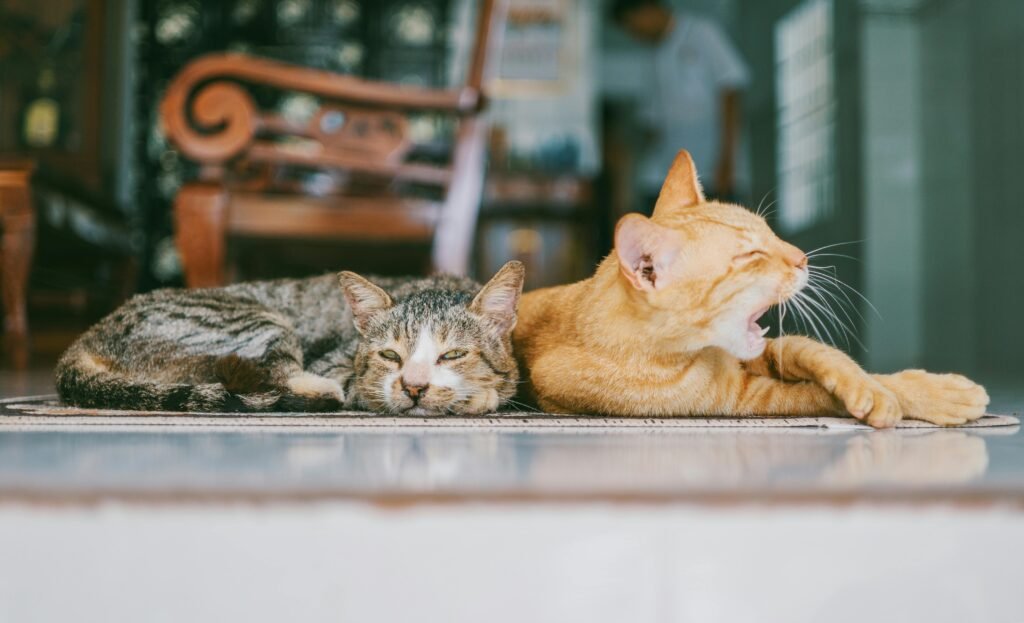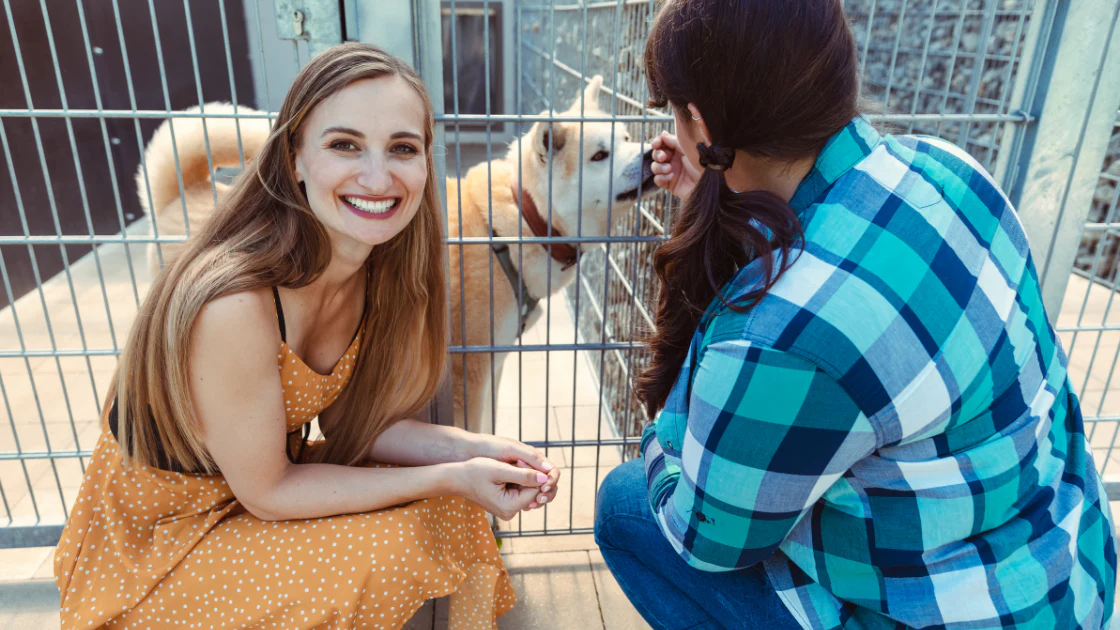Selecting the perfect pet to fit your lifestyle is a significant decision that requires thoughtful planning. Your new companion will be a long-term part of your life, so it’s important to choose one that aligns with your routine, living situation, and preferences. I will tell you how to Choose the Right Pet for Your Lifestyle A Comprehensive Guide

Understanding Your Lifestyle
Before you decide on a pet, it’s important to evaluate your lifestyle. Here are some key factors to consider:
Time Commitment
Different pets require varying levels of time and attention. Consider your daily schedule and how much time you can realistically dedicate to your new pet.
High Time Commitment: Dogs, especially puppies, need significant time for training, exercise, and social interaction.
Moderate Time Commitment: Cats require daily attention, playtime, and grooming.
Low Time Commitment: Small animals like hamsters or fish need less daily interaction but still require regular care.
Living Space
Your living space plays a crucial role in determining which pet is right for you. Consider the size of your home and whether you have a yard.
Large Homes with Yards: Ideal for larger dog breeds that need space to run and play.
Apartments or Small Homes: Better suited for smaller pets like cats, small dogs, or indoor-only pets like fish or reptiles
Activity Level
Consider your own activity level and how it aligns with the needs of potential pets.
Active Lifestyle: High-energy dogs, such as Border Collies or Labradors, are great for active individuals who enjoy outdoor activities.
Moderate Activity: Cats or small dogs that enjoy moderate playtime and exercise.
Low Activity: Pets like fish or small mammals are suitable for those with a more sedentary lifestyle.
Allergies
Allergies can significantly impact your choice of pet. If you or a family member is allergic to pet dander, consider hypoallergenic breeds or pets with minimal shedding.
Financial Considerations
Pets come with various costs, including food, veterinary care, grooming, and supplies. Make sure you can afford the ongoing expenses associated with pet ownership.
Family Dynamics
If you have children or other pets, consider how a new pet will fit into your household dynamics. Some pets are more family-friendly and tolerant of children, while others may prefer a quieter environment.
Types of Pets and Their Requirements
Dogs
Dogs are known for their loyalty, companionship, and ability to provide unconditional love. However, they require significant time, attention, and care.
Factors to Consider
Breed: Different breeds have different temperaments, energy levels, and care requirements. Research breeds to find one that fits your lifestyle.
Size: Larger dogs need more space and exercise, while smaller dogs can adapt to apartment living.
Energy Level: High-energy breeds need more exercise and mental stimulation.
Grooming Needs: Some breeds require regular grooming, while others have minimal grooming needs.
Training: All dogs need training, but some breeds are easier to train than others.
Ideal Lifestyles
Active Individuals: Breeds like Border Collies, Australian Shepherds, and Labradors.
Families: Breeds like Golden Retrievers, Beagles, and Boxers.
Apartment Dwellers: Breeds like French Bulldogs, Pugs, and Dachshunds
Cats
Cats are independent, affectionate, and relatively low-maintenance pets. They can adapt well to various living situations, making them a popular choice for many households.

Factors to Consider
Breed: Different breeds have different temperaments and grooming needs. For example, Persian cats require regular grooming, while Siamese cats are more vocal and social.
Activity Level: Some cats are more active and playful, while others are content with lounging around.
Grooming Needs: Long-haired breeds require more grooming than short-haired breeds.
Ideal Lifestyles
Busy Individuals: Cats are more independent and can be left alone for longer periods.
Apartment Dwellers: Cats adapt well to indoor living.
Families: Breeds like Maine Coons, Ragdolls, and British Shorthairs are known for their friendly and tolerant nature.
Small Mammals
Small mammals like hamsters, guinea pigs, and rabbits can be great pets, especially for those with limited space or time.
Factors to Consider
Species: Different species have different care requirements and lifespans. For example, hamsters are solitary, while guinea pigs are social and need companionship.
Habitat: Ensure you can provide an appropriate cage or enclosure.
Care Needs: Regular cleaning, feeding, and social interaction are essential.
Ideal Lifestyles
Limited Space: Small mammals require less space than larger pets.
Busy Schedules: They need less daily interaction but still require regular care.
Families: Guinea pigs and rabbits can be great pets for children, with adult supervision.
Birds
Birds can be wonderful companions, known for their intelligence, social nature, and ability to mimic sounds.
Factors to Consider
Species: Different species have different care requirements, noise levels, and lifespans. For example, budgies are smaller and easier to care for than larger parrots.
Time and Interaction: Birds, especially parrots, need social interaction and mental stimulation.
Cage Size: Ensure you can provide a spacious cage and allow for out-of-cage time.
Ideal Lifestyles
Social Individuals: Birds thrive on interaction and can bond closely with their owners.
Limited Space: Smaller bird species can live comfortably in apartments.
Families: Birds can be great family pets, but larger species may require more attention.
Fish
Fish can be a visually appealing and relaxing addition to your home. They are relatively low-maintenance compared to other pets.

Factors to Consider
Species: Different fish have different care requirements and compatibility with other fish.
Tank Size: Ensure you can provide an appropriately sized tank with proper filtration.
Maintenance: Regular tank cleaning and water quality checks are essential.
Ideal Lifestyles
Limited Space: Fish tanks can fit into various living spaces.
Low Interaction Needs: Fish are low-maintenance and don’t require daily interaction.
Busy Schedules: Fish can thrive with regular feeding and maintenance.
Reptiles
Reptiles, such as turtles, snakes, and lizards, can be fascinating pets. They require specialized care and environments.
Factors to Consider
Species: Different reptiles have different habitat, diet, and temperature requirements.
Enclosure: Ensure you can provide an appropriate and secure enclosure.
Care Needs: Regular feeding, cleaning, and habitat maintenance are essential.
Ideal Lifestyles
Limited Interaction: Reptiles don’t require daily social interaction.
Busy Schedules: They need regular care but are generally low-maintenance.Assessing Your Daily Routine
Understanding your daily routine is crucial in determining the right pet for you. Consider your work schedule, social life, and daily activities. High-energy dogs need daily exercise, while low-maintenance pets like fish or hamsters suit a relaxing lifestyle.
Daily hours away from home impact suitable pet choice. Dogs need more attention; cats and small animals are more independent.
Social Life: Do you travel frequently or have an active social life? Pets like fish or reptiles are easier to care for during absences compared to dogs or cats.
Evaluating Your Living Space
Your living space is a key factor in choosing the right pet. Consider the size, layout, and pet-friendliness of your home.
Size of Home: Larger homes with yards are suitable for bigger pets, while smaller homes or apartments are better for small pets or those that don’t require a lot of space.
Pet-Friendliness: Ensure your home is safe and accommodating for a pet. Consider pet-proofing areas and providing necessary amenities like litter boxes or cages.
Outdoor Access: If you have a yard, you can accommodate pets that need outdoor time, like dogs. For apartment living, consider pets that are content indoors, like cats or small mammals.
Considering Your Financial Situation
Pet ownership comes with various costs. Make sure you can afford the ongoing expenses associated with your chosen pet.
Initial Costs: Consider the cost of purchasing or adopting the pet, initial veterinary visits, and necessary supplies.
Ongoing Costs: Factor in food, grooming, veterinary care, and other regular expenses.
Emergency Costs: Be prepared for unexpected veterinary bills and emergencies.
Matching Pets to Your Activity Level
Your activity level should align with the needs of your pet. Choose a pet that complements your lifestyle and energy levels.
High Activity Level: If you enjoy outdoor activities, consider high-energy dogs that need regular exercise.
Moderate Activity Level: Cats or small dogs that enjoy moderate playtime and exercise can be a good match.
Low Activity Level: Pets like fish, reptiles, or small mammals are suitable for those with a more relaxed lifestyle.
Allergies and Sensitivities
If you or a family member has allergies, consider pets that are hypoallergenic or have minimal shedding.
Hypoallergenic Breeds: Some dog and cat breeds are hypoallergenic and produce fewer allergens.
Low-Shedding Pets: Pets like fish or reptiles don’t produce dander and are suitable for allergy sufferers.

